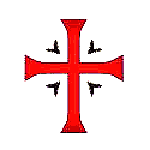Introduction

Christianity arrived in Albania before the 4th century from two directions. The Ghegs in the north of the country became Latin Christians, while the Byzantine tradition was predominant among the Tosk people in the south.
Following the Turkish conquest in the 15th century, the majority of Albanians became Muslim. Under Ottoman rule, the remaining Orthodox population of Albania was integrated into the Patriarchate of Constantinople, and all Orthodox religious services, instruction and cultural activities were conducted in Greek.
The first Orthodox Albanian community in USA
The first Orthodox Albanian community to use Albanian in the liturgy was in Boston, Massachusetts, USA, in 1908 among a group of Albanian immigrants led by Fan Noli (1882-1965). Noli had prepared his own translation of the liturgy into Albanian, and used it also during a tour several major cities of Europe in 1911. Soon after Albanian independence in 1912, Fan Noli traveled to Albania where he would be ordained a bishop and become the head of the church, whose independence he strongly supported. He also became an influential political figure, and would even serve briefly as prime minister for five months in 1924, until his government was overthrown and he went into permanent exile.
Type your query in the box below:
To Top
The church greatly suffered during the dictatorship of Enver Hoxha as all churches were placed under government control, and land originally held by religious institutions were taken by the state. Religion in schools was banned. In 1952 Archbishop Kristofor was discovered dead; most believed he had been killed. In 1967, inspired by China’s Cultural Revolution, Hoxha closed down all churches and mosques in the country, and declared Albania the world’s first (and only) atheist state. All expression of religion, public or private, was outlawed. Hundreds of priests and imams were killed or imprisoned.
Church after 1991
The church has, however, seen a revival since religious freedom was restored in 1991, with more than 250 churches rebuilt or restored, and more than 100 clergy being ordained.
The church is led by the Archbishop of Tirana, Durrës and All Albania, who is currently Anastasios Yannoulatos. There are also Bishops of Berat, Korçë, Gjirokastër, Kruja and Apolonia.
